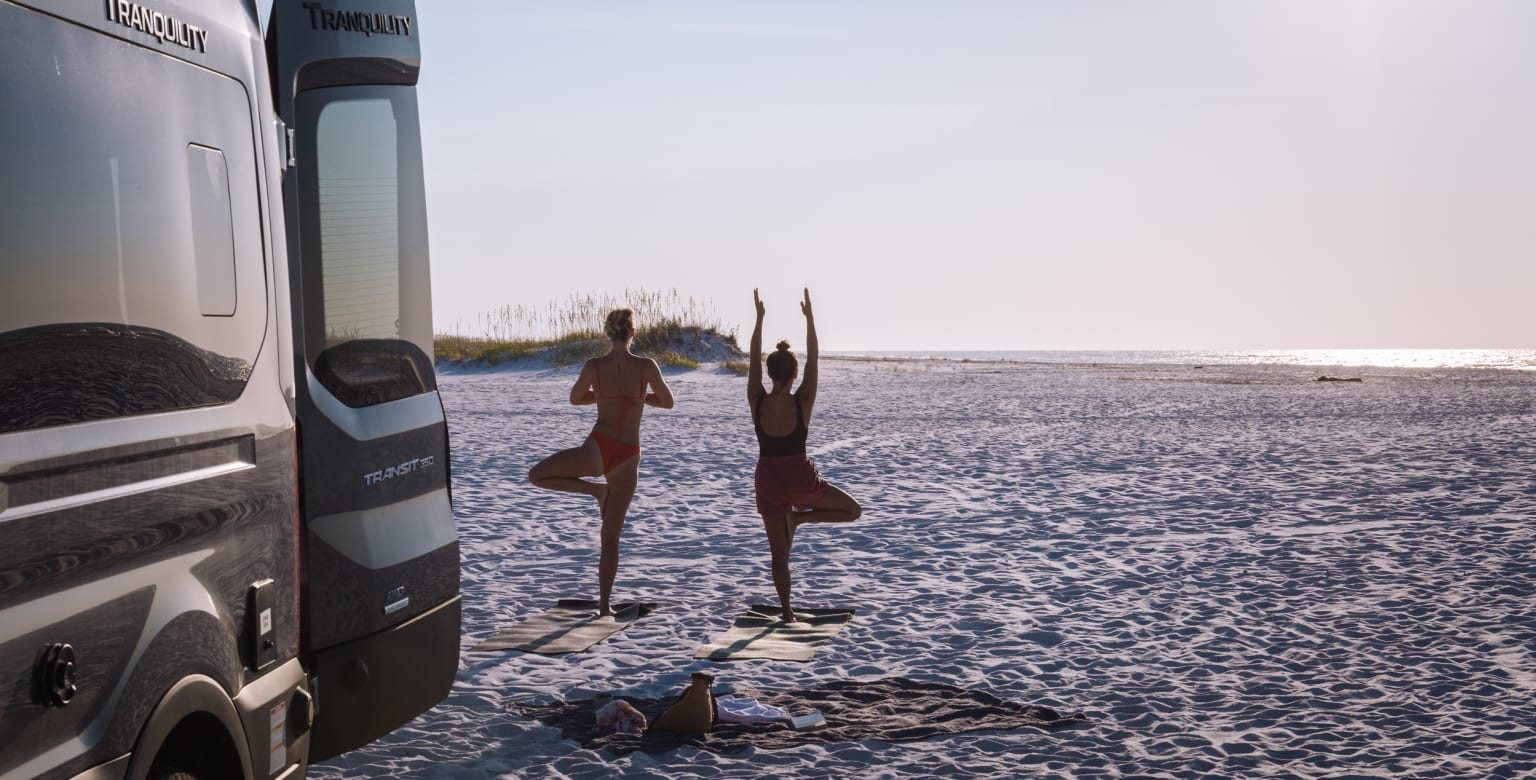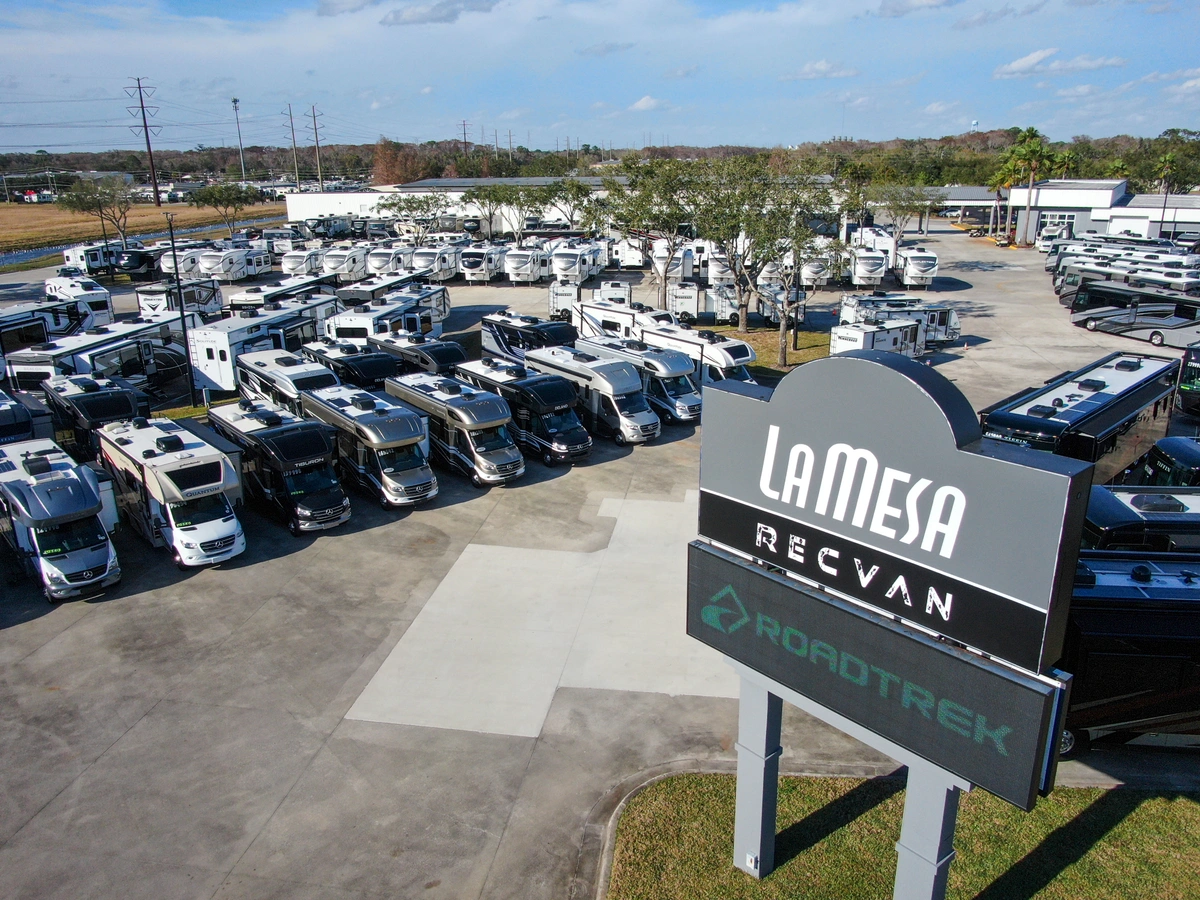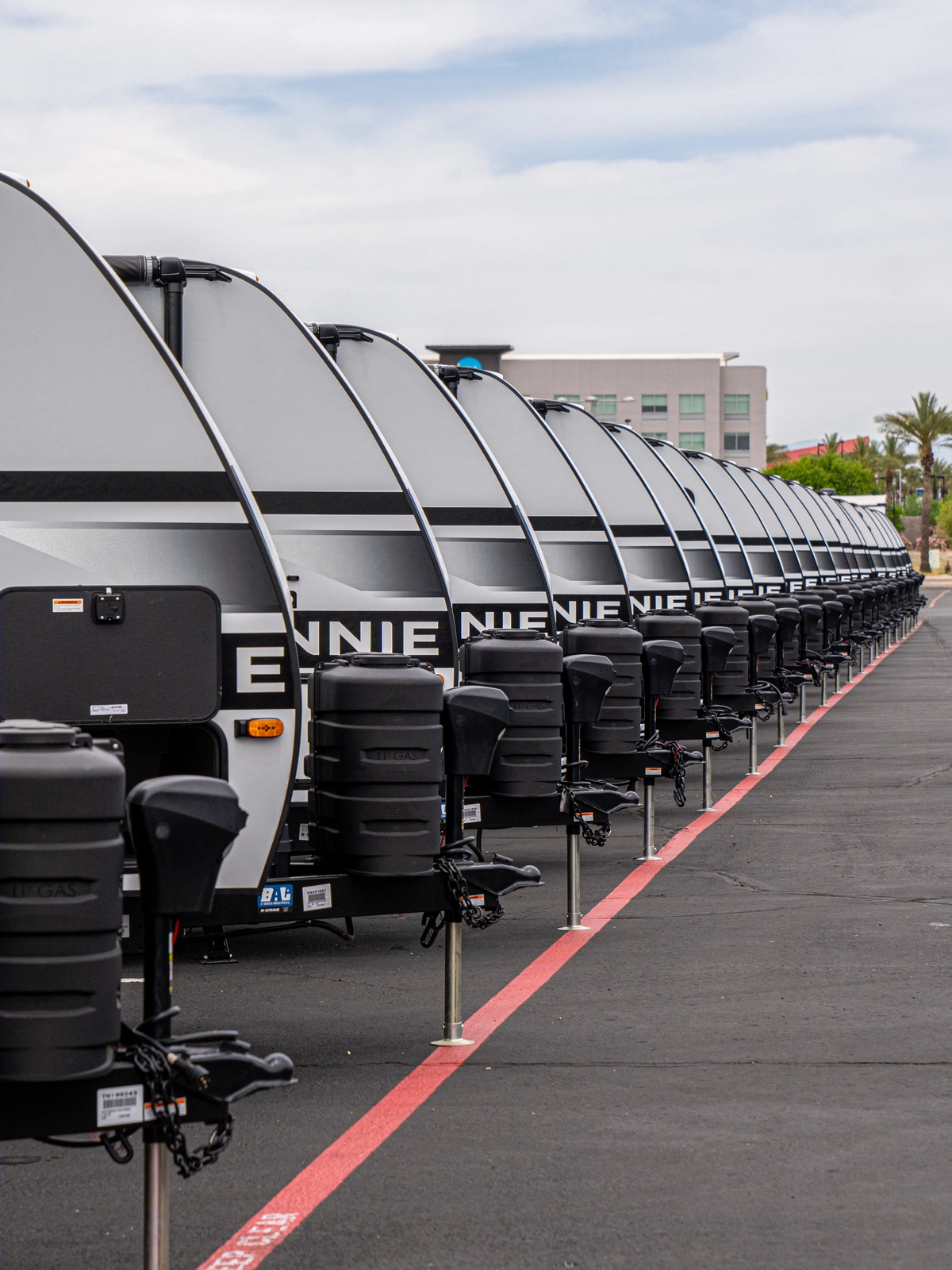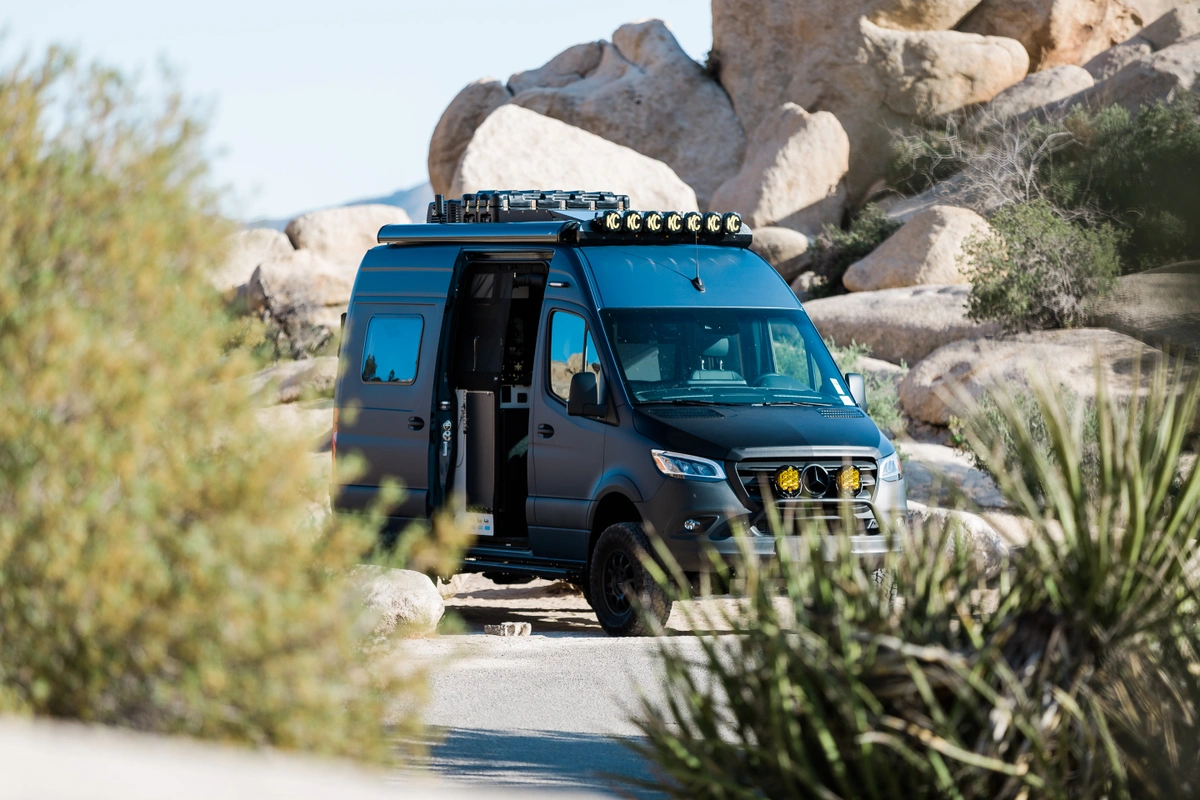Long drives and fast food stops are hard on the body. Many RVers have perfected their fitness routines on the road by changing the way they travel. With a few simple habits and some creativity, it’s possible to exercise anywhere and stay in great shape. A fitness routine also means you will have more energy to explore and less resistance from a stiff back on long drives.
It doesn’t matter what type of shape you are in currently either. Start slow if needed and take your time. Consistency and identifying opportunities on the road will lead to positive outcomes. Use these simple tips to stay fit while RVing.
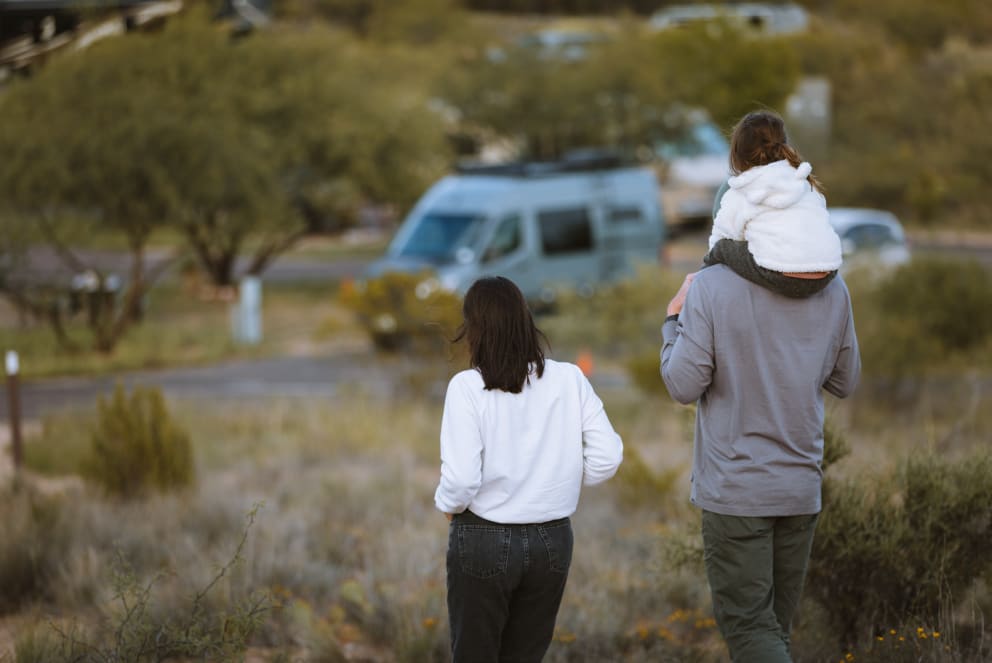
Keep an Exercise Schedule
Before we jump into specific ways of exercising and finding resources, it’s important to put things on paper. Keeping a schedule or routine is always a good idea. Personally, I like to get out for a sunrise hike or other form of exercise at least three days a week. Then I sprinkle in other activities as I travel. Being on the road can lead to less predictable schedules but it’s surprisingly easy to make things work. Walking a new town, doing static exercises at one-night layovers or hitting a gym on the road isn’t difficult. Grabbing an hour for movement is something we should all strive for, even while covering miles and long sections of highway.
Go for a Hike
There are few things more simple and enjoyable than taking a hike. RVers often intersect travel with destinations that offer extensive trail systems and in many situations, it costs nothing to go for a walk. Keep a daypack handy with water, snacks, a small medical kit and extra layers. I also keep a headlamp, pocket knife, GPS emergency system and a few other odds and ends in mine. This way, you won’t need much planning. Just study the maps and know where trails lead then go explore!
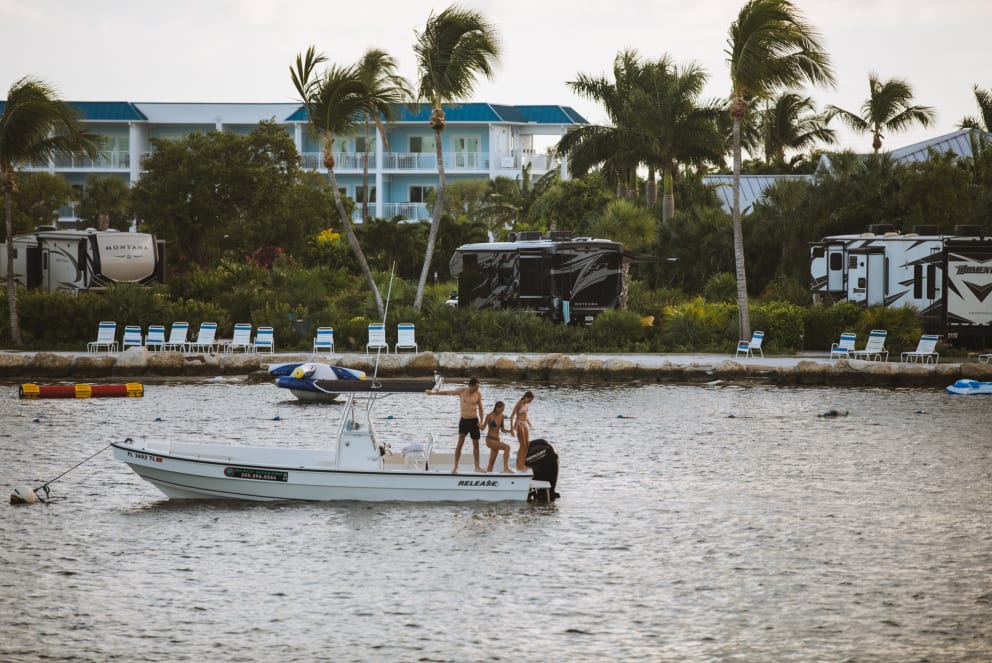
Take a Dip
When the weather's hot and the water temperatures mild,take a swim for exercise. You can hit a local pool, jump in a lake or find a swimming hole on a river. Of course, RVers near the ocean will be especially keep on a nice saltwater bath. Swimming is low impact and it’s a great tool for overall fitness. I carry a small wetsuit, goggles and a swimming buoy to stay comfortable and safe even when the water is colder. A snorkel and fins are a great option, especially in tropical ocean regions.
Use Exercise Bands
Carrying heavy weights and home gym products isn’t practical. It will weight down your RV and take up valuable storage space. Resistance bands are a great solution for strength training however. They are affordable and come in different sizes and resistance settings. You can do many of the same lifting exercises like curls, lateral raises, resistance squats, situps and more. It’s worth watching a few videos or grabbing an exercise list to have handy while planning resistance band workouts. You can even do these exercises inside the RVwhen the weather is bad outdoors.
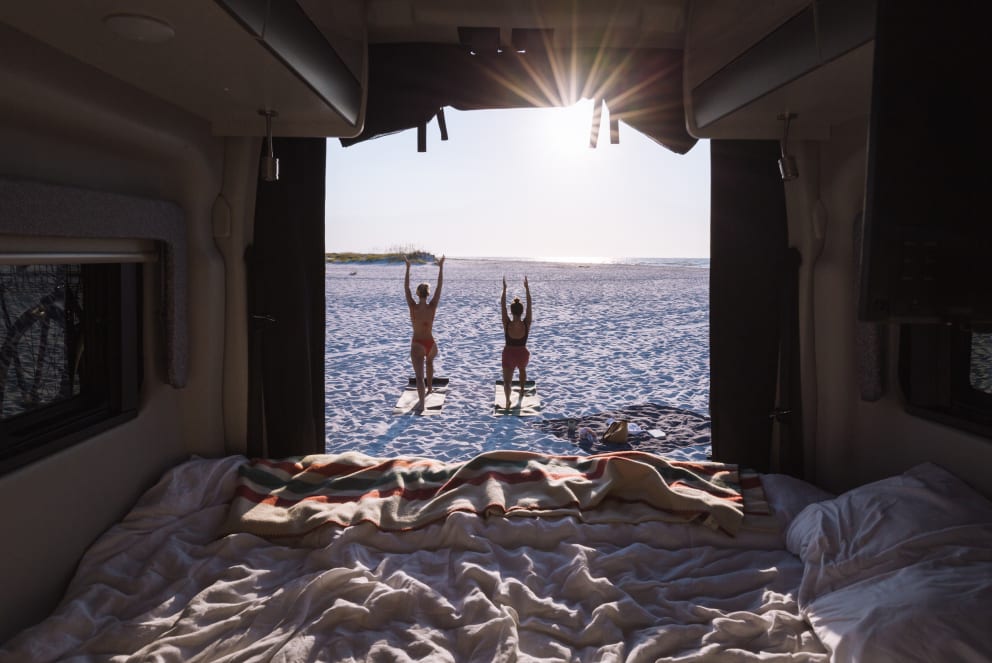
Bring a Yoga Mat
Driving long hours is hard on your body. Bring a yoga mat and use it for workouts and stretching routines. With the enormous number of free videos available, you can find routines to fit your skill level and play them on a phone or tv in your RV. The yoga mat is perfect for those days where you need an indoor option. It also works great outdoors! Setup on a beach or with a mountain view and spend an hour working on your core strength and flexibility.
Jump Rope
Sometimes it’s hard to find a good cardio option. Rest stops and new areas where running is difficult means you need a stationary alternative. A jump rope is the perfect solution for getting a cardio workout from a single station. Combine it with resistance bands for a full body workout that doesn’t require leaving the side of your RV. The best thing about a jump rope is the lack of storage space required. It can fit in a small bag with your resistance bands for a very portable workout kit.
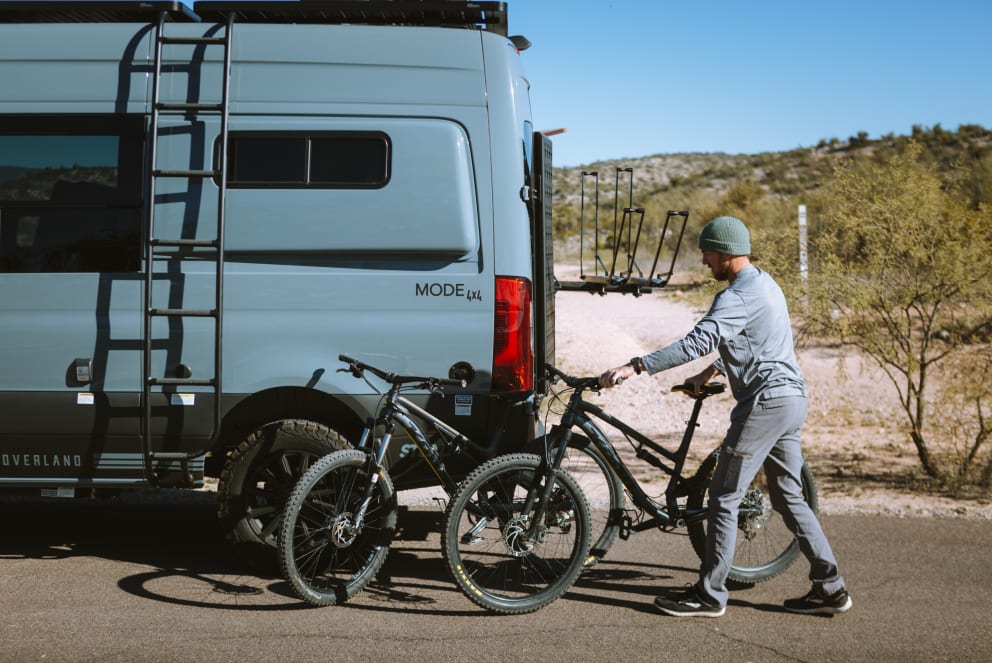
Hit the Gym
Traveling in an RV doesn’t mean the gym is off limits. In fact, many travelers keep gym memberships because they offer a major convenience on the road. National chains are the best option because they have locations in many of the cities you will visit and they often have large parking lots with room for your RV. Head inside to workout and take advantage of the swimming pools, saunas, showers and all of the conveniences found at gym locations. They are especially convenient for showers when your water tank is low or you simply don’t want to add liquids to your greywater and blackwater tanks.
Bring a Bike
Grab your favorite bike and attach it to a rack on your RV exterior. It can be a dedicated mountain bike, road bike or a hybrid made for riding on pavement and gravel. It all depends on your preference and purpose. Bicycles are a major bonus for RVers because they make it easy to explore new places and even do quick supply runs when you don’t want to break camp or disconnect a towed vehicle. Bikes are dual purpose because they have utility but also are wonderful for recreation and exercise. I use my bicycle to help run shuttles on rafting camp trips and to ride around back roads near campsites. It’s a great way to stay active while RVing and it’s easy to strap a bike rack on your rig.
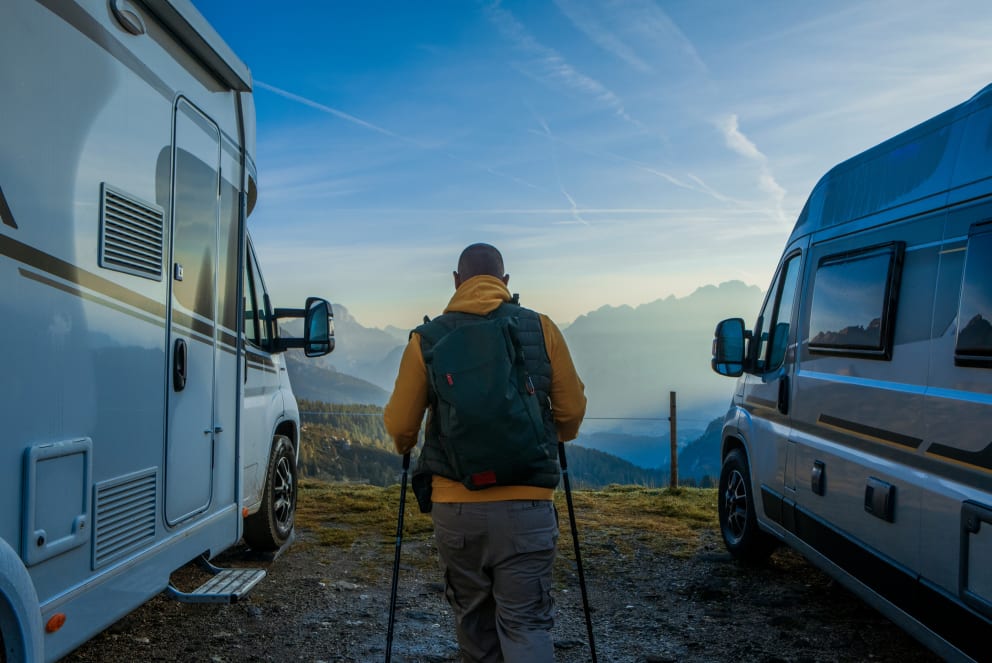
Use Local Parks
Park systems across the country have invested in exercise infrastructure and it’s not difficult to find these underutilized facilities. Running and walking paths are common as are things like pull up and dip bars and other stationary exercise equipment. Do a quick internet search when you reach a new destination and explore the park systems to what they offer. Small towns and big cities all tend to have some type of infrastructure that encourages exercise and it’s usually free to use.
Run Anywhere
It goes without saying that walking and running are great ways to stay fit. The best part about going for a run is that it’s free and possible almost anywhere. Find a trail system, run on local paths or hit the roads where they have plenty of space to run safely. For the running RVers out there, life is pretty good on the road. You will always have fresh scenery and inspiration that keeps your runs exciting and fun. It’s a good idea to plan your routes in advance or carry a phone with maps to ensure you don’t get lost. Local parks with trail systems are always great because they have maps and are pretty intuitive. You can even bring the dog to ensure you both get plenty of exercise between drives.
